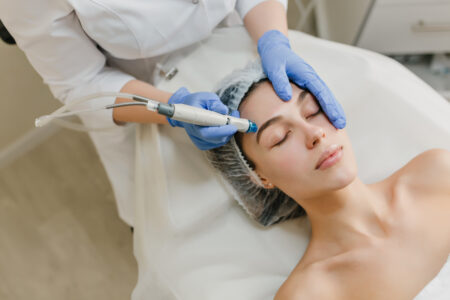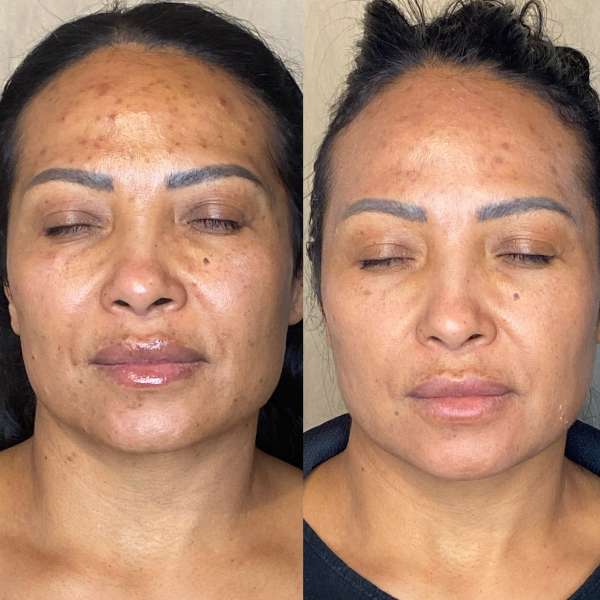Medifacials: The Ultimate Solution for Glowing, Healthy Skin
What are Medifacials?
Medifacials are medical-grade facials that use scientifically backed technologies and ingredients to treat specific skin concerns at a deeper, more effective level than traditional spa facials. These treatments are performed under the supervision of a dermatologist or a trained skin expert.
Medifacials vs. Traditional Facials
- Provider: A dermatologist or trained medical aesthetician vs. a beautician or salon staff.
- Purpose: To treat specific skin conditions, such as acne, pigmentation, or aging, vs. basic cleansing and relaxation.
- Products: Medical-grade products with higher concentrations of active ingredients vs. cosmetic-grade creams and packs.
- Technology: Advanced devices like microdermabrasion, LED therapy, and lasers vs. basic techniques like steam and manual massage.
How Medifacials Work
- Skin Analysis: A customized treatment plan is created after assessing your skin type and specific concerns.
- Cleansing: A deep, gentle cleanse to remove dirt, oil, and makeup.
- Exfoliation and Peeling: Advanced exfoliation methods, such as chemical peels or microdermabrasion, to remove dead skin cells and encourage cell turnover.
- Extraction: Clogged pores, blackheads, and whiteheads are carefully and painlessly extracted, if necessary.
- Therapy and Infusion: The skin is infused with medical-grade serums, vitamins, and antioxidants using technologies like radiofrequency, microcurrents, or oxygen therapy.
Common Types of Medifacials
- Hydrafacial: A popular multi-step treatment that uses a patented device to cleanse, exfoliate, and extract impurities while simultaneously hydrating the skin with serums.
- Oxygen Facial: This treatment infuses oxygen and serums into the skin to boost collagen production, improve circulation, and revitalize the complexion.
- Carbon Laser Facial: Uses a carbon mask and laser technology to deeply exfoliate the skin, reduce oiliness, and minimize pores.
Benefits and Side Effects
- Benefits: Addresses specific skin issues, offers deep cleansing and hydration, stimulates collagen and elastin production, and leads to long-lasting, visible results.
- Side Effects: Mild redness and irritation, temporary sensitivity, mild peeling or dryness, breakouts, and allergic reactions (rare).
How it Works
Consultation and deep cleansing
A dermatologist first performs a thorough skin analysis to identify your specific skin type and concerns. The treatment begins with a deep cleansing to remove surface-level impurities, oil, and makeup.
Advanced exfoliation
Using medical-grade techniques, the skin is exfoliated to remove dead skin cells and promote cellular turnover. This can involve specialized equipment like hydradermabrasion tools or a chemical peel with mild acids like salicylic or glycolic acid.
Extraction and targeted treatment
Extractions are performed gently to clear clogged pores of blackheads and whiteheads. A customized treatment then targets your specific skin issue, such as acne, pigmentation, or fine lines, using advanced tools like LED light therapy, lasers, or radiofrequency devices.
Nourishment and hydration
Finally, a blend of medical-grade serums rich in antioxidants, peptides, and vitamins is infused deep into the skin. A final mask or moisturizer is applied to soothe, hydrate, and protect the skin, locking in moisture and nutrients.


Before
After
have a question?
Quick answers to questions you may have
How is a medifacial different from a regular salon facial?
Medifacials are performed under the supervision of a dermatologist and use medical-grade products and devices for more targeted, long-lasting results. Regular facials mainly focus on surface-level cleansing, offer temporary results, and are primarily for relaxation. Medifacials address underlying skin issues at a cellular level, while salon facials typically do not.
Are medifacials suitable for sensitive skin?
Yes, medifacials can be customized to be gentle enough for sensitive skin. The products and techniques used are non-abrasive and often contain soothing, natural ingredients to avoid irritation. It is important to discuss any skin sensitivities with your dermatologist beforehand.
Is there any downtime after a medifacial?
Generally, there is no downtime after a medifacial, and you can resume your regular activities immediately. Some people may experience mild redness, but this typically subsides within a few hours. The full and lasting benefits of the treatment will develop over the next few weeks.
How many sessions are required to see results?
While many people notice an immediate improvement in skin texture and radiance after just one session, a series of treatments is recommended for best results. For specific concerns like acne or pigmentation, dermatologists may recommend a series of sessions spaced 4 to 6 weeks apart. Your aftercare routine and daily skincare habits also play a vital role in maintaining the results.

